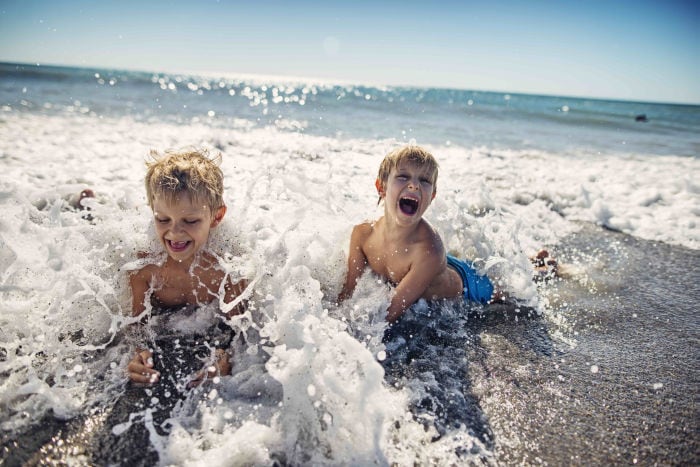By Michael S. Mitchell, MD, Medical Director of the Pediatric Emergency Department, Brenner Children’s Hospital, and Wake Forest Baptist Health representatives
Water safety is always a big concern in summer months, but most of the warnings parents receive are related to pool safety. While much of that advice can also apply to lakes, rivers, oceans, reservoirs and other types of open water, there are some special considerations parents should make to ensure their child’s safety.
Open water presents a greater risk of drowning. Statistics show that 43 percent of the children and teens who drown do so in open water—whereas 38 percent drown in a pool, and 19 percent by other means. There are a number of reasons why this is.
Points of Access
Perhaps the most obvious reason is that a swimming pool has out-of-water access around its entire perimeter, whereas open water usually only has one point of access—a boat or dock.
Limited Visibility
Lack of clarity in the water is also an important factor. There are many dangers that can lurk in open water, including wildlife, trash and debris, stumps and vegetation, and holes or sudden drop-offs. In North Carolina’s famously muddy lakes and rivers, these hazards can be impossible to see from the surface.
Currents and Tides
The ocean presents its own unique risk in the form of riptides. These dangerous currents aren’t visible and can easily sweep a child or teen away.
Considering the potential dangers that open water presents, the best way to ensure your child’s safety is to make certain he or she is always wearing a life preserver. The state of North Carolina requires children age 13 and under to wear a U.S. Coast Guard-approved life jacket when on a boat, water sport vehicle or when swimming in open water. Other states have similar laws; it’s best to verify the water-safety regulations wherever you may be vacationing or visiting.
Just because your teenager may not be required to wear a life jacket, doesn’t mean he or she shouldn’t be monitored in the water. According to Safe Kids Worldwide, nearly half of all open-water fatalities among minors happen in those who are in their late teens. That’s as much as all other childhood age groups combined. Of these deaths, a whopping 80 percent are boys.

It’s also important to remember that not all open water deaths are drowning. There are other causes, including diving deaths. Make sure you’re aware of water depth before you permit any diving off a boat.
Alertness goes a long way, regardless of a child’s age. This applies to both swimming pools and open water. Often, when there are many adults around, there’s a feeling that there are more eyes on the children. Unfortunately, the opposite is usually true. The more adults around, the more those adults will be engaging with one another—and these interactions limit the focus on children in the water. Sometimes it’s helpful for adults to take shifts in watching any children who are in the water. Even on land, there should be heightened awareness if there’s water nearby. Shallow bodies of water can still be dangerous for young children. For instance, toddlers who drown in open water are most likely to drown in ponds.
It’s also important to know what drowning looks like. Most children don’t struggle and scream and splash around when they’re drowning; they’re more likely to silently slip under the water. In the event of an emergency on the water, you may be a child’s first responder. Be prepared by learning CPR. You can find a CPR training class near you by visiting redcross.org/take-a-class.
With proper preparation, danger awareness and heightened alertness, you may be able to save the life of your child—or someone else’s.
Brenner Children’s Hospital has received a grant from Safe Kids Worldwide to promote open water safety. If you’d like to find out more about open water safety, visit safekids.org.
For more tips and information on staying safe this summer, visit brennerchildrens.org/Summer-Safety

*Sponsored by Brenner Children’s Hospital
Want to see more blogs like this and get notifications on local events and happenings? Subscribe to our free weekly newsletters here.
















